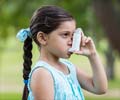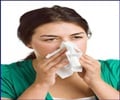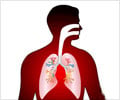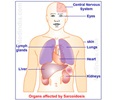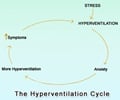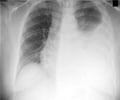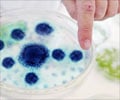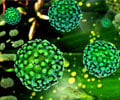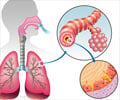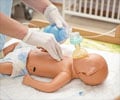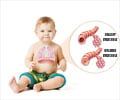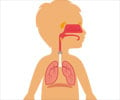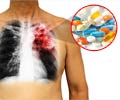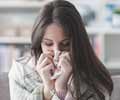Tuberculosis
Tuberculosis, TB is short, is an infectious disease that usually attacks the lungs. However, it can attack almost any part of the body. Tuberculosis is contagious; it spread from person to person through the air.
It is important to understand that there is a difference between being infected with TB and having TB disease. Someone who is infected with TB has the TB germs, or bacteria, in their body. The body' HOLESs defences are protecting them from the germs and they are not sick. Someone with TB disease, however, is sick and can spread the disease to other people. A person with TB disease needs to see a doctor as soon as possible.
Anyone can get TB. But for various reasons, some groups of people are at higher risk to get active TB disease. The groups that are at high risk include: people with HIV infection (the AIDS virus), people in close contact with those known to be infectious with TB, people with medical conditions that make the body less able to protect itself from disease, people who are underfed, alcoholics and drug addicts.
A person with TB infection will have no symptoms. A person with TB disease may have any, all or none of the following symptoms: a cough that will not go away, feeling tired all the time, weight loss, loss of appetite, fever, coughing up blood and night sweats. Some of these symptoms can also occur with other types of lung disease so it is important to see a doctor and to let him decide.
There are two possible ways a person can become sick with TB disease:
The first applies to a person who may have been infected with TB for years and has been perfectly healthy. The time may come when this person suffers a change in health. The cause of this change in health may be another disease like AIDS or diabetes. Or it may be drug or alcohol abuse or a lack of health care.
Whatever the cause, when the body's ability to protect itself is damaged, the TB infection can become TB disease. In this way, a person may become sick with TB disease months or even years after they first breathed in the TB germs.
The other way TB disease develops happens much more quickly. Sometimes when a person first breathes in the TB germs the body is unable to protect itself against the disease. The germs then develop into active TB disease within weeks.
A skin test is the best way to find out if a person has TB. For this test, a small amount of chemical is placed just below the top layers of skin, usually on the arm. Two to three days later a health care worker checks the arm to see if a bump has developed and measures the size of the bump. If the bump is of a certain size the test is positive and the person has TB infection.
Other tests including a chest X-ray and a test of a person's mucus follow.
Treatment for TB depends on whether a person has TB disease or only TB infection. A person who has become infected with TB, but does not have TB disease, may be given preventive therapy. Preventive therapy aims to kill germs that are not doing any damage right now, but could break out later.
If a doctor decides a person should have preventive therapy, the usual prescription is a daily dose of isoniazid (also called 'INH'), an inexpensive TB medicine. The person takes INH for six months (up to a year for some patients), with periodic checkups to make sure the medicine is being taken as prescribed. After a few weeks a person can probably even return to normal activities and not have to worry about infecting others.
The patient usually gets a combination of several drugs (most frequently INH plus two to three others), usually for six to nine months. The patient will probably begin to feel better only a few weeks after starting to take the drugs. If the medicine is taken incorrectly or stopped the patient may become sick again and will be able to infect others with TB.
If the medicine is taken incorrectly and the patient becomes sick with TB a second time, the TB may be harder to treat because it has become drug resistant. This means that the TB germs in the body are unaffected by some drugs used to treat TB.
Multi-drug resistant TB is very dangerous, so patients should be sure to take all of their medicine correctly.
The drugs usually make the patient non-infectious within days or weeks. TB is spread by handling a patient's bed sheets, books, furniture, or eating utensils. Brief exposure to a few TB germs rarely infects a person. It's day-after-day close contact that usually does it.


